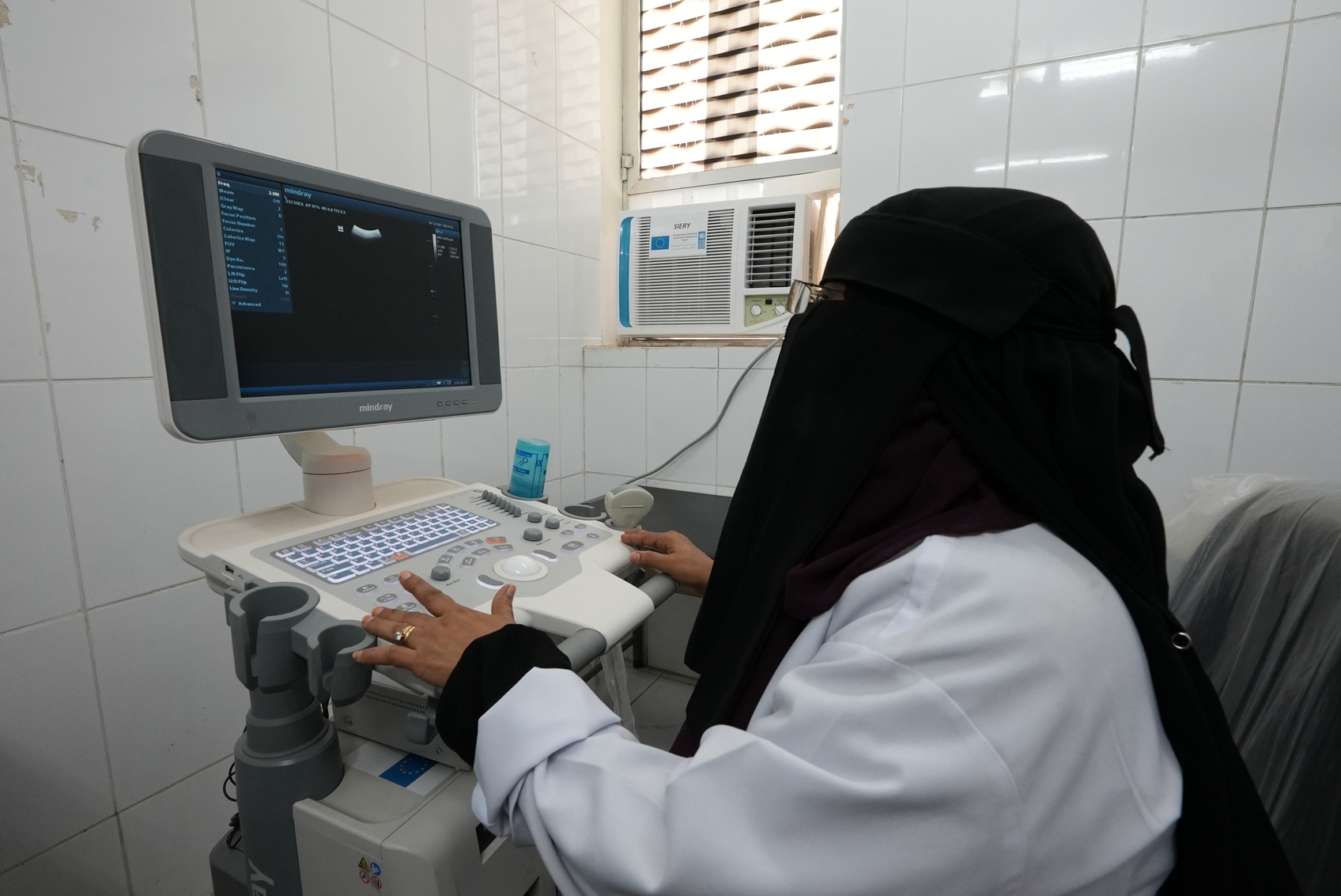Many remote areas suffer unavailability of health centers to provide primary health services such as injury bandaging, immunization and preliminary emergency cases as obtaining these services requires good effort and money particularly when travel is required from the countryside to centers, factor that encouraged PWP to contribute in the alleviation of the suffering of the population residing in remote and distant areas by construction of health units or centers providing basic health services which were dreams before in the minds of many poor families preferring to stay with pain and patience of injuries as suffering for them is lesser than travel to town treatment centers.
Through its implemented projects in the health sector, PWP was able to create health services absent before and contribute to the expansion of primary health care services through improvement of health facilities infrastructure in the poor and disadvantageous areas.
The easy access of primary health services saved the poor as they were obliged to walking long distances to reach towns for medication and treatment and to pay for travel expenses and bear travel hardships that is now overcome by the presence of health centers providing medical services in the remote and distant areas, to support the poor rural areas and the health care programs to disadvantageous groups and accordingly contributing to the improvement of their health situations and decrease the mortality rates among mothers and children by improvement of health facilities infrastructure represented in health centers and units.
Support:
The vision of the PWP in the health sector is represented in supporting efforts exerted by the Ministry of Public Health & Population to increase the coverage of basic health services and also coordinate with the Ministry of Public Health & Population in the provision of staff as well as the operation and maintenance of these facilities while the contribution of PWP is limited to building health centers and units as alternative to the present unsuitable facilities and renovation and expansion of the existing ones. Results of the social impact study revealed improvement of the health situation indicators through improvement of preventive services of children immunization against the six childhood diseases as well as improvement of women›s immunization against tetanus disease and immunization against epidemic fever disease.
These indicators led to the improvement of the health situation of poor communities in the long run and improve life expectancy at delivery and therefore contribute to the improvement of the health human development indicator.
Achievement:
The total completed projects in the health sector during the years 2014 – 2016 amounted to 21 projects at a total cost of USD 3,225,179 of with approximately 124,660 beneficiaries providing about 4829 work/months as job opportunities to accumulatively reach 397 projects in a total cost of USD 38,270,709 for the interest of 2,042,367 beneficiaries and provided about 69,868 work/months as job opportunities.

Difficulty facing the poor:
Reaching the nearest health unit or hospital mostly represents a difficulty for many of the rural and remote areas populations of Yemen who seek to obtain treatment even primary health services related to injury bandaging and periodical immunizations for children.
Most remote areas and distant population settlements lack health centers and units, thus provision of primary health care necessitates huge financial burden particularly when need arises to go to town, bigger financial losses are afflicted represented in the cost of health service. These sufferings are common feature of majority of the remote Yemeni areas residents.
Money and effort to obtain primary health care service such as injury bandaging make many households bear the burden of pain instead of bearing financial cost they can›t afford particularly with the increased poverty rate among rural population, while emergency morbid cases are neglected such as accidents and delivery due to need for travelling long distances extending to tens of kilometers and rough roads.
This sufferance and deprivation and health services lack created a situation of dissatisfaction among residents who live as they say in the 21st millennium while couldn’t obtain primary emergency services and therefore the PWP intervention in the health sector has a good impact on the poor and the limited income individuals in the target areas where PWP could contribute to the improvement of the health conditions of people through the existence of health clinics and centers near to population settlements with nominal charges in addition to the services provided by these facilities and the other accompanying facilities such as pharmacies supplying medicines.
Fuad Sulaiman describes the situation and suffering of residents in Shaoub area in Al-Maqatera district of Lahj governorate before the rehabilitation and renovation of Shaoub health center as difficult for those who bear the bitterness of pain and tiredness of travel to the governorate center. But now the situation is different where residents don’t have to travel the governorate center and save money and effort as well as quick treatment of cases and the big benefit is for children and women without delivery risk. The center also became near to all areas and treatment became easy and many outbreak diseases are now eradicated.
Better service:
The traditional method in patient treatment in most remote and distant areas was prevalent and those who treat are individuals who acquired that experience through practice and rooms devoted for treatment were located in houses and shops assuming the role of hospitals and health centers.
Salmeen Al-Kaladi of Qishn area in Al-Mahra governorate describes the health center in the area as deteriorated and liable to falling with its narrow size and limited medical services restricted in the best conditions to preliminary first aid before the intervention of PWP by the rehabilitation and renovation of Qishn area health center.
Salmeen states that the matter changed following the rehabilitation and expansion of the area health center by PWP and the situation is now better and the level of health services provided is good particularly for emergency cases which were




